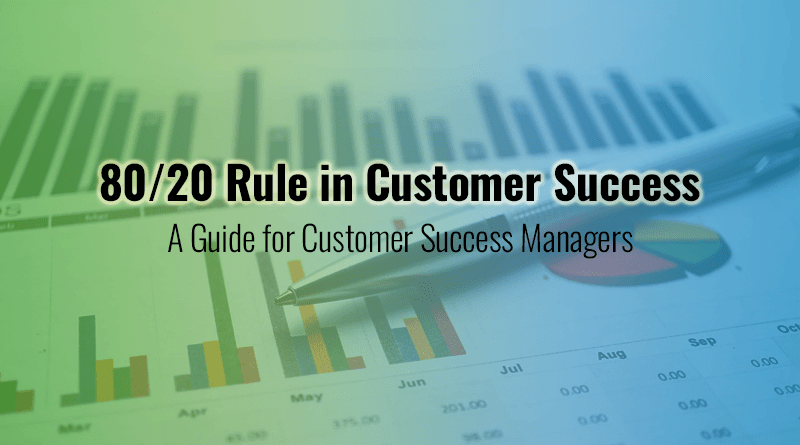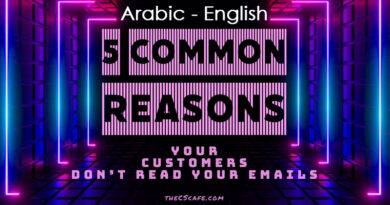80/20 Rule in Customer Success
The 20% Input That Drives 80% of Customer Success
By: Mohammed Alqaq
In the customer success practice, finding the most effective strategies to deliver value and drive satisfaction is essential. As a Customer Success Manager, you’re constantly striving to optimize your efforts and resources. One common principle that can help you achieve remarkable results is the Pareto Principle, often known as the 80/20 rule.
This principle suggests that roughly 20% of your input leads to 80% of your output. But what is this 20% input that yields such significant outcomes?
The key to the Pareto Principle is to identify that around 20% of one’s actions on the most productive tasks lead to the most success. This principle requires and enables us to spot the few important things that are happening and ignore the mass of unimportant things.

What are the key strategies and practices that exemplify the 80/20 rule in customer success?
Customer Segmentation
Identifying and focusing on the most valuable customers can have a disproportionate impact on your customer success efforts. By segmenting your customer base and understanding their unique needs, you can allocate resources more effectively. Consider the success story of a software company that analysed their customer data. They found that 20% of their customers were responsible for 80% of their revenue. By providing specialized support and tailored solutions to this segment, they not only retained these high-value customers but also increased upsell opportunities.
Proactive Communication
Proactive communication is a game-changer in customer success. Reach out to customers before they encounter issues, and you’ll see a significant boost in satisfaction. An example of this principle in action is an e-commerce platform that implemented automated order tracking notifications. By keeping customers informed at every step of the delivery process, they reduced inquiries and complaints, resulting in a substantial uptick in customer satisfaction.
Onboarding and Training
Effective onboarding is crucial in ensuring customers achieve value from your product or service. A SaaS company experienced remarkable results by investing in comprehensive onboarding resources, including video tutorials and personalized training sessions. The initial 20% of their efforts to create these resources led to an 80% increase in user retention, as customers found it easier to get started and realize the product’s potential.
The 80/20 Principle: The Secret to Achieving More with Less
The unspoken corollary to the 80/20 principle is that little of what we spend our time on actually counts. But by concentrating on those things that do, we can unlock the enormous potential of the magic 20 percent, and transform our effectiveness in our jobs, our careers, our businesses, and our lives.
Data-Driven Insights
Leveraging data to gain insights into customer behavior and preferences can significantly impact customer success. One case study involves a mobile app developer that used data analytics to understand which features were most popular among their users. By focusing on enhancing these features, they saw a substantial increase in user engagement and overall app satisfaction.
Customer Feedback
The feedback loop is a crucial element of customer success. Identifying and acting upon the top 20% of customer feedback can lead to an 80% improvement in your product or service. For instance, a restaurant chain that actively solicited customer feedback discovered that a small number of specific menu items consistently received praise. By doubling down on these popular items and promoting them more prominently, they witnessed a significant boost in sales and customer satisfaction.
Account Expansion
Account expansion within your existing customer base can be a high-impact initiative. By identifying cross-selling and upselling opportunities with your most engaged customers, you can drive revenue growth. A software-as-a-service (SaaS) company recognized that their top 20% of users were regularly asking for additional features. By offering these features as part of an upsell package, they not only satisfied their best customers but also boosted revenue significantly.
The 80/20 rule can be a guiding principle for optimizing your efforts and resources. By identifying the 20% input that results in 80% of your output, you can achieve remarkable results. Whether it’s customer segmentation, proactive communication, onboarding and training, data-driven insights, customer feedback, or account expansion, there are numerous strategies to focus on. Real-world success stories illustrate the power of this principle in action, showcasing how it can drive customer satisfaction, retention, and revenue growth. As a Customer Success Manager, by applying the 80/20 rule to your strategies, you can deliver exceptional results and create satisfied, loyal customers.
80/20 Rule Best Practice to Maximize Productivity
To apply this rule effectively, one should focus on identifying the key 20% of activities or tasks that yield 80% of the desired results. Start by analyzing your daily or project-related activities and determine which ones are the most impactful and contribute the most to your goals. Once identified, prioritize and allocate more time and resources to these high-impact tasks.
It’s essential to regularly reassess your priorities as circumstances change, ensuring that you continue to invest your energy in the most productive areas. By consistently applying the 80/20 rule, individuals and organizations can streamline their efforts, increase efficiency, and achieve better outcomes with less time and resources.
If your first attempt at applying the 80/20 rule didn’t achieve the expected results, there are several steps you can take to mitigate this situation and improve your productivity strategy.
Reassess your initial analysis of tasks and activities to ensure you accurately identified the high-impact 20%. Perhaps some tasks were misjudged, or circumstances have changed, and new priorities have emerged.
It’s also crucial to evaluate the effectiveness of your time management and execution of the selected tasks. Are you using your time efficiently? Are there ways to optimize your approach to those high-impact activities?
Seek feedback from peers or mentors to gain fresh perspectives and insights.
Be flexible and open to adjustments as you refine your application of the 80/20 rule.
By continuously learning from your experiences and adapting your strategy, you can ultimately achieve better productivity outcomes, even if your initial attempt falls short of expectations.
Maintain your Productivity Strategy
The frequency at which you should assess the application of the 80/20 rule to maintain your productivity strategy depends on various factors, including the nature of your tasks, your goals, and the rate of change in your environment.
It’s advisable to conduct periodic assessments, such as weekly, monthly, or quarterly reviews, to ensure that your priorities align with your objectives. If you work in a dynamic or rapidly changing field, more frequent assessments may be necessary.
Regularly monitoring and adjusting your strategy allows you to stay responsive to shifting circumstances and emerging opportunities, ensuring that you continue to focus on the most productive activities and adapt to the evolving demands of your work and life.
Author

Mohammed Alqaq
The Founder of Customer Success Middle East | 2023 Top100 Customer Success Strategist | Experienced Customer Success and Professional Services Executive Manager with many years of successful global experience and leadership in delivering Customer Success Management, and Professional Services.






